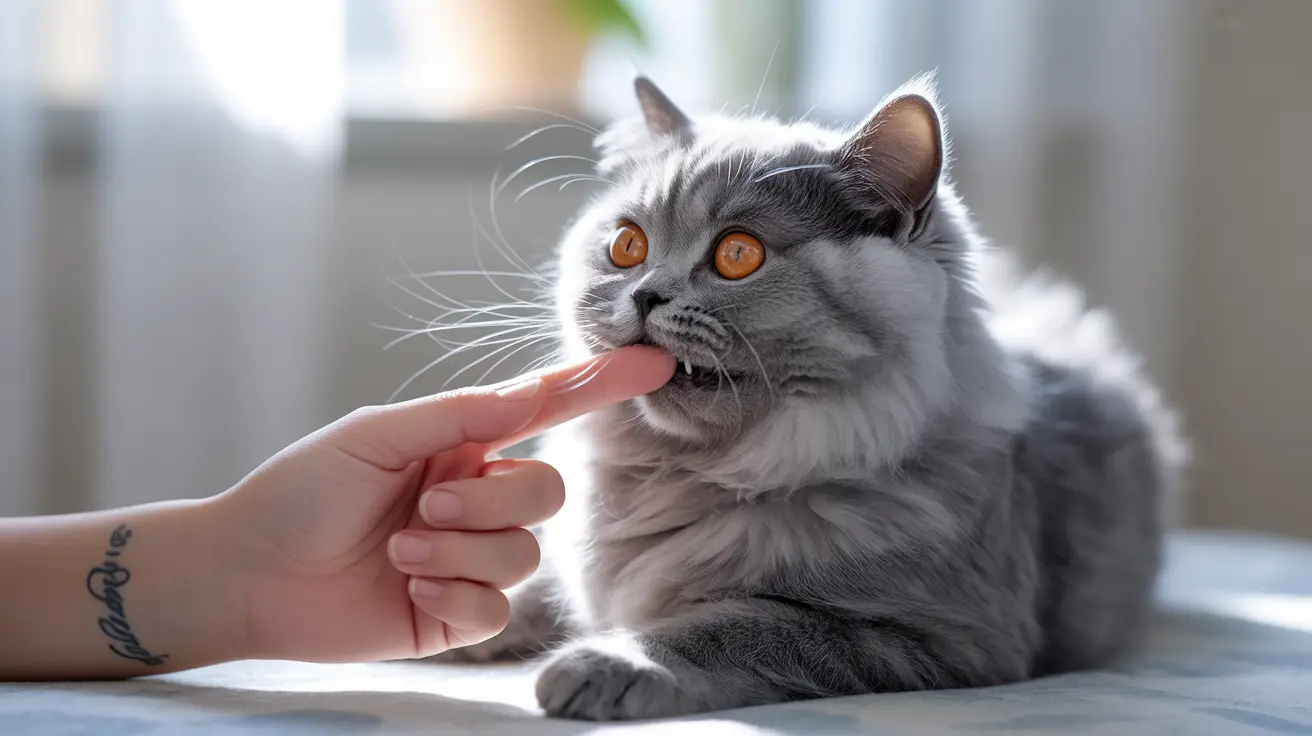What Are Cat Love Bites?
Cat love bites are gentle nips or nibbles that cats give during moments of interaction, typically while being petted or during play sessions. Unlike aggressive bites, these gentle nibbles rarely break the skin and are often accompanied by purring, rubbing, or other affectionate behaviors.
These bites differ from aggressive biting in both intensity and context, serving as a form of communication rather than an attack. They're part of your cat's natural behavioral repertoire, rooted in their early development and social bonding instincts.
Common Reasons for Love Bites
Showing Affection
Many cats use love bites as a way to show affection, similar to how they groom their feline companions in the wild. This behavior, known as allogrooming, is a social bonding activity that cats may extend to their human family members.
Overstimulation Response
Sometimes, cats give love bites when they become overstimulated during petting. Their sensitive nerve endings can only handle so much stimulation before they need a break, and a gentle bite is their way of communicating this threshold.
Playful Behavior
Particularly in younger cats, love bites might occur during play sessions as they practice their hunting skills. This is a natural behavior that helps them develop proper bite inhibition and social skills.
How to Respond to Love Bites
When your cat gives you a love bite, it's important to respond appropriately to maintain positive interactions:
- Stay still rather than pulling away quickly
- Observe your cat's body language for signs of overstimulation
- Gradually decrease petting intensity if your cat seems overwhelmed
- Redirect their attention to appropriate toys if the bites occur during play
Prevention and Training Tips
To minimize unwanted love bites and maintain positive interactions with your cat:
- Learn to recognize your cat's tolerance limits
- Provide regular play sessions with appropriate toys
- Create a enriched environment with climbing spaces and scratching posts
- Use positive reinforcement to encourage gentle behavior
When to Be Concerned
While love bites are usually harmless, some situations warrant attention:
- If bites become increasingly aggressive
- When bites are accompanied by hissing or growling
- If your cat's behavior suddenly changes
- When bites break the skin or cause pain
Frequently Asked Questions
Why do cats give gentle love bites during petting or play?
Cats give gentle love bites as a form of communication, either to show affection, indicate overstimulation, or as part of their natural play behavior. This stems from their instinctive grooming and social bonding behaviors.
How can I tell if my cat's bite is a love bite or a sign of aggression?
Love bites are typically gentle, don't break the skin, and occur during positive interactions. Aggressive bites are harder, often accompanied by warning signs like hissing, growling, or flattened ears, and may break the skin.
What body language should I watch for to prevent overstimulation bites in my cat?
Watch for signs like tail twitching, skin rippling, ears flattening, or dilated pupils. These indicators suggest your cat is becoming overstimulated and may soon give a love bite.
How should I respond when my cat gives me a love bite?
Remain calm and still, don't pull away suddenly, and gradually decrease the intensity of your interaction. If needed, give your cat space to calm down.
Can love bites from cats mean they are feeling pain or discomfort?
Yes, sometimes cats may give love bites if they're experiencing pain or discomfort in a particular area. If you notice this behavior consistently when touching specific spots, consult your veterinarian.






